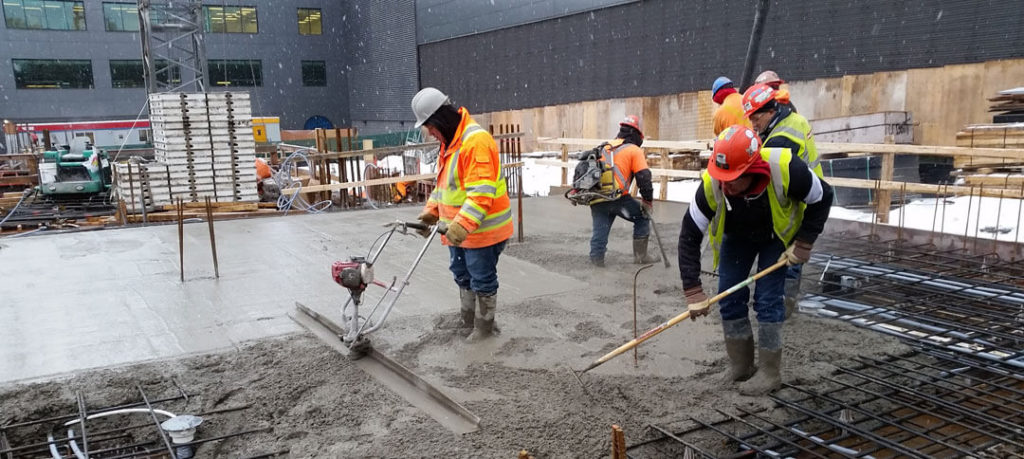SmartRock® Plus: A Value-Added Solution for Cold-Weather Concrete Construction
Before the coming Christmas holidays, residents of Canada and the United-States may be getting their first taste of winter. While snow storms are unpleasant for most, harsh weather can be even worse for construction. Stormy weather makes for unworkable conditions, thereby slowing down job performance. In cold climates, the sub-grade soil freezes, making it difficult to work with. It also takes much longer for concrete to cure.
Across Canada, the average temperature in January is a bone chilling 5° F (?15°C). That’s not even taking into account the annual snowfall per cm. But work must go on, even in the winter.
Cold-Weather Concreting
The American Concrete Institute created a Guide to Cold weather concreting: ACI 306R-16 outlining the procedures for placing, finishing, curing, and protecting concrete when temperatures dip below 40°F (5°C) for more than three days. The purpose of this guide is to provide quality assurance for concrete to gain strength and durability in the winter.
An important take-away from this guide is the recommendation to use warming devices to protect the concrete from freezing. Warming devices such as heaters and thermal blankets aid concrete with gaining strength by keeping it above 40°F.
However, cold temperature is not as much of a challenge as monitoring the job-site in the midst of a severe storm. With limited site-access it can be extremely difficult to accurately assess the concrete’s progression.
A Value-Added Option
To overcome this challenge, concrete producers can offer their customers a reliable way of obtaining real-time updates on their concrete. This is possible when using SmartRock® Plus, a solution that allows for remote site monitoring.
SmartRock® Plus is a system that connects sensors to a cloud interface and mobile application. The sensors are compact 2-inch devices that are fully embedded beneath the concrete during the pour for real-time in-situ monitoring.
The wireless sensors transmit data on the concrete temperature and strength based on the maturity concept (ASTM C1074 standard test method). With immediate connectivity, data is recorded and stored on a cloud interface. The mobile application then provides users instantaneous access to this information which they can share with their team.
The significance of SmartRock® Plus is the opportunity to streamline the decision-making processes when undertaking formwork removal, post-tensioning, curing optimization, and opening roads to traffic.

An Overview of SmartRock® Plus Wireless Concrete Sensors
Selecting the Right Mix
At the beginning of a project, ready-mix producers using SmartRock® Plus will upload calibration data for their mixes to the cloud interface, making this information accessible to the contractor. By purchasing SmartRock® Plus mixes from their supplier, contractors have the capacity to select suitable concrete for their project. As a result of advanced efficiency, mix producers will benefit from customer loyalty and brand differentiation as well as mix performance data from the jobsite.
Reduce Heating Costs
The additional expenditure for outdoor heating is a hefty bill for the budget. For contractors, receiving updates on the real-time strength of the concrete in-situ will assist with managing the heating temperatures. In the case that concrete is maturity is achieved, heating can be cut off sooner, saving money on the cost of fuel.
Maintain Control of the Schedule and Jobsite
There will always a margin of error in every project. This margin can be minimized when using SmartRock® Plus for real-time concrete strength determination. This means that contractors don’t have to stall work as they wait on lab technicians to conduct break tests. During periods of harsh weather, SmartRock® Plus gives contractors more control of their jobsite, and improves operations and schedule management.
The introduction of smart technology in the construction industry has minimized the barriers of compiling data, information sharing, and the processes of testing capacities. The industry advancements that technology offers couldn’t be any more useful as we brace ourselves for the start of a cold winter.


